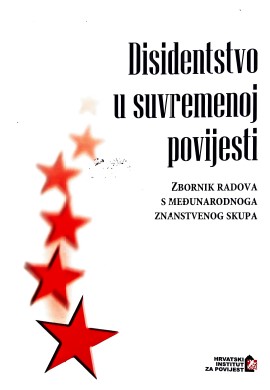Crkve kao protivnici komunističkog sistema u Jugoslaviji – sličnosti i razlike
The Churches as Opponents of the Communist System in Yugoslavia – Similarities and Differences
Author(s): Radmila Radić
Subject(s): History of Church(es), Political history, Government/Political systems, Politics and religion, Post-War period (1950 - 1989), History of Communism, Eastern Orthodoxy
Published by: Hrvatski institut za povijest
Keywords: dissidents; Yugoslavia; Catholic Church; Serbian Orthodox Church;
Summary/Abstract: If certain of the determinants that appear in the literature dealing with the Yugoslavian dissident movement which label as dissidents all those whose thinking opposed the ruling majority are accepted, including anti-communists and nationalists, that is to say, if all those who were able to contribute to the subversion and destruction of communism while creating a new space for culture and information delimited from the state are labelled dissidents, then we can place the activity of the Churches or religious communities within the framework of dissident activity or the arena of semi-legal opposition. There was a difference in the manner in which the Catholic and the Serbian Orthodox Churches expressed opposition to the regime, in terms of approach, degree, and form. These differences grew out of the varying structures of the Churches, their objective strength, the historical experiences, their size and so on. The only matter in which there was no difference was in the length of the opposition. The nature of the opposition expressed toward the regime by the Catholic and Serbian Orthodox Church changed and adapted to the conditions in the country as well as the state of international relations in which Yugoslavia existed, but these were not applied at the same time. During Yugoslavia’s existence, the Churches represented the ultimate challenge to the Party, be-cause they offered an alternative philosophy of life and, for longest time, the only possible opposition. This drew all those who thought differently to them. The Churches themselves in varying degrees worked to draw opponents of the regime to them, and the youth, and in this process they utilized different means and methods. With time “the latent dissatisfaction expressed through turn toward the Church and religion began to take on a political complexion.” The terrain required for rehabilitating the past, and with it the Churches and religion itself, was prepared far earlier than the decay of the socialist system and ideology began and for this reason the Churches during the 1980s rather easily embraced the opportunity to carry out their revitalization.
Book: Disidentstvo u suvremenoj povijesti
- Page Range: 181-192
- Page Count: 12
- Publication Year: 2010
- Language: Serbian
- Content File-PDF

